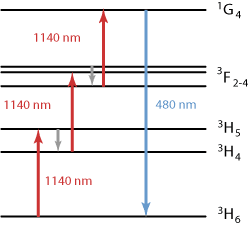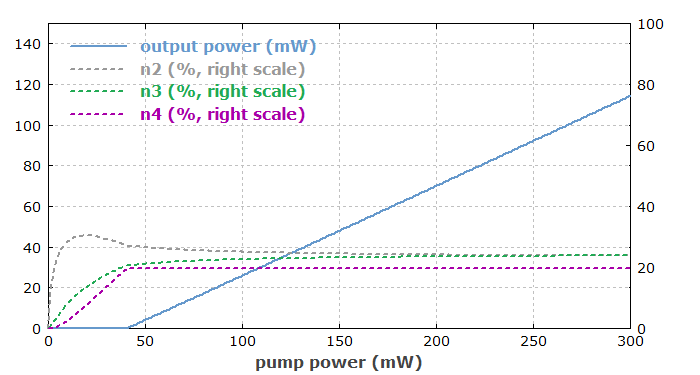
RP Fiber Power – Simulation and Design Software
for Fiber Optics, Amplifiers and Fiber Lasers
| Overview | Features | Speed | Model |
| Data | Interface | Demos | Versions |
Example Case: Thulium-doped Blue Upconversion Fiber Laser

Description of the Model
We numerically simulate a fiber laser with the following properties:
- The fiber is made of ZBLAN glass (→ fluoride fibers) and doped with thulium (Tm3+) ions. Due to the low phonon energies of the ZBLAN glass, the levels 3H4 and 3F2 are metastable (not quenched by multi-phonon transitions).
- The thulium ions can be excited to a high-lying electronic level (1G4) by subsequent absorption of three pump photons at 1140 nm. From that level, stimulated emission to the ground state generates blue laser light at 480 nm.
- The left fiber end has a totally reflecting mirror, while the other fiber end has an output coupler mirror with 60% reflectivity.
The model uses spectroscopic data as published in R. Paschotta et al., “Characterization and modeling of thulium:ZBLAN blue upconversion fiber lasers”, J. Opt. Soc. Am. B 14 (5), 1213 (1997).
Results
Figure 2 shows the power distributions in the fiber, and also the fractional excitation levels of the thulium ions.

Figure 3 shows the output power as a function of the pump power. Also it shows the degree of excitation of the three metastable levels, averaged over the whole fiber length. Above threshold, the population of the highest level, which is the upper laser level, is clamped to a constant value.

